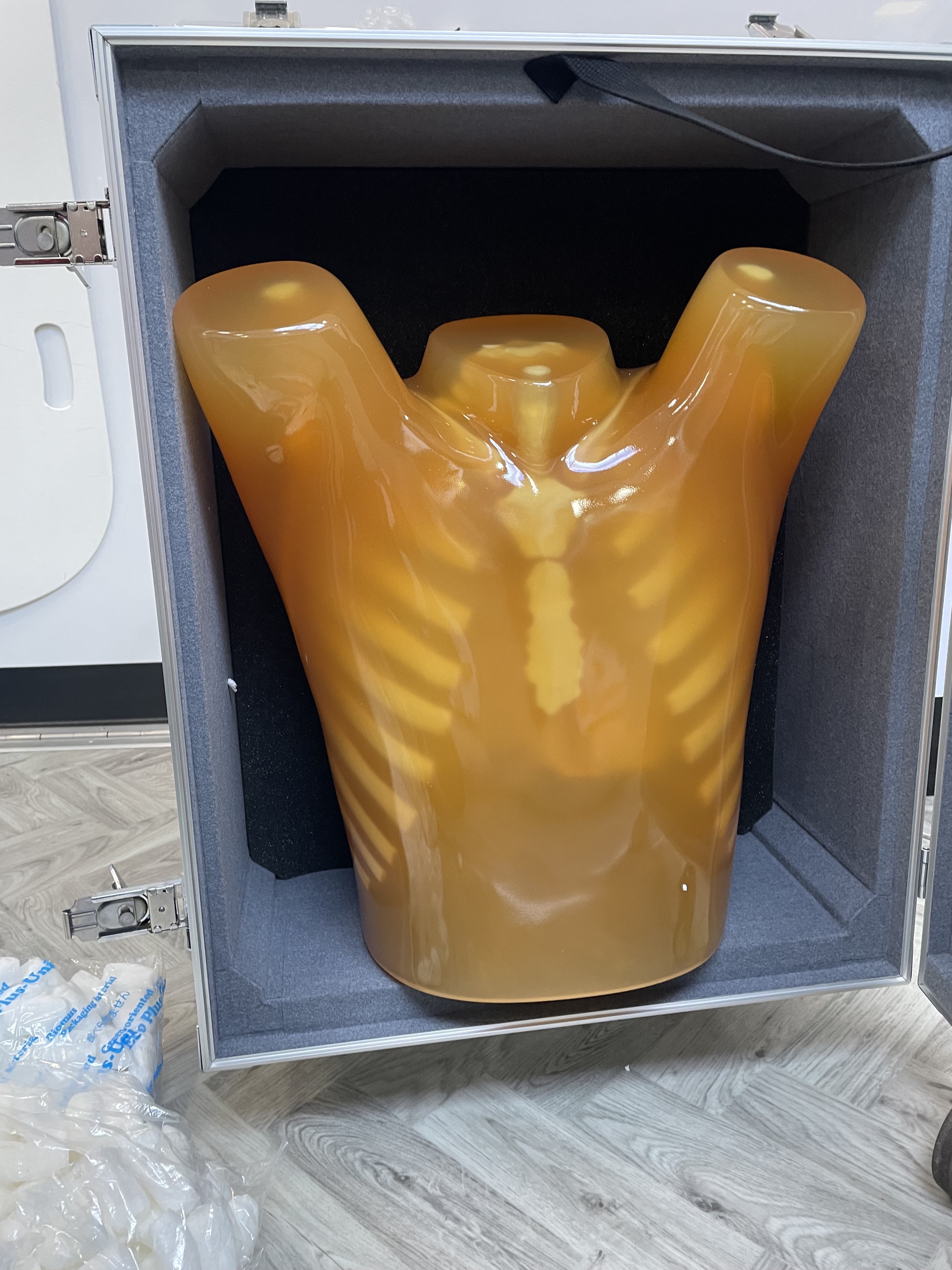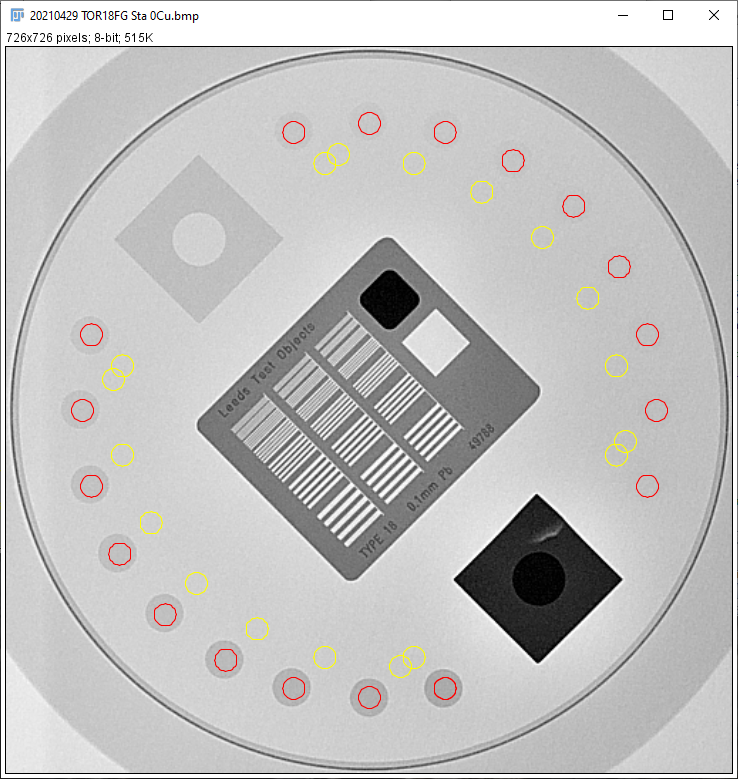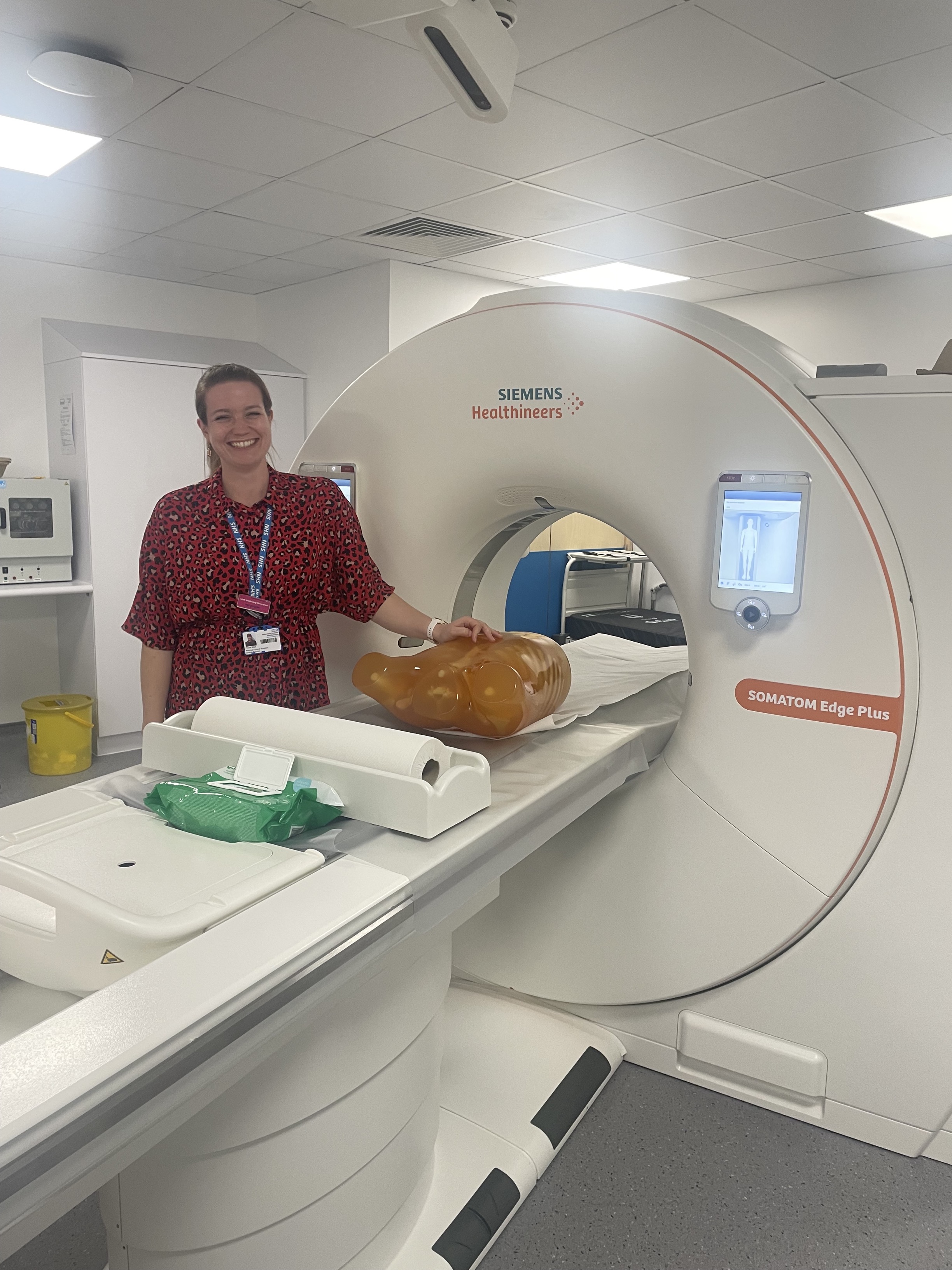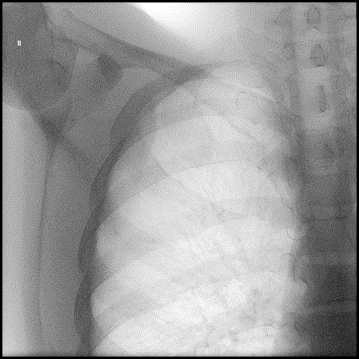Service development and innovation (radiation protection)
Our areas of development and innovation are:
Radiology protocol review and optimisation
In the radiation protection group, we work closely with radiology and other imaging departments to optimise all diagnostic procedures that involve ionising radiation. This part of our work is a rapidly developing and expanding area as the Trust brings new imaging services to patients such as targeted lung health check (TLHC), community diagnostic centres, and a planned expansion of diagnostic imaging capacity.
We are members of optimisation groups for CT, fluorography users and paediatric radiology. Recent projects have involved changing the way that the cross-sectional imaging department scan heads, reducing radiation dose for lower limb CTs by nearly 90%, improving the images from dental imaging in the emergency department and reducing the radiation dose for bowel cancer screening imaging.
Phantoms
We have invested in a range of phantoms. We now have an anthropomorphic chest and head with holes for TLDs, a CATPHAN, a CTDI phantom and a multipurpose chest 'Lungman' phantom (below).

Equipment trials
We engage with other departments to assess loan and trial equipment including trial lasers. Recently we have helped in the procurement of a new mobile x-ray machine to be used in resus.
Innovation in dermatology quality assurance
Our dermatology department purchased an MED (minimal erythemal dose) tester for identifying patients’ individual sensitivity to narrowband UVB prior to starting phototherapy. The radiation protection group was required to acceptance test the device and determine the testing times to achieve the required doses to determine a patient’s MED for various skin types. Previously, patients were MED tested and treated using the same phototherapy cabin. By using a specific MED tester this has allowed us to create additional appointments and reduce waiting times for patients. Ongoing quality assurance is required to monitor the output of both the MED tester and UV phototherapy equipment to ensure that any changes in output are accounted for and do not result in unfavourable patient treatment (such as under or overdosing).
Support for clinical trials involving imaging
Our MPEs review local research studies involving ionising radiation, ensuring UHS is able to undertake aspects of these and contribute to clinical trials. We also provide MPE assessments of new trials.
Research
We're active in research in both ionising and non-ionising radiation work, and also support trainees and students through teaching, training and project supervision.
Trainees within the group perform MSc research projects on relevant topics such as iterative reconstruction processes in computed tomography (CT). We also have the following ongoing projects:
- Automatic quantitative image quality assessment for fluorography and digital radiography

- Staff radiation doses in radiopharmacy
- Setting up low-dose lung cancer screening protocols

- Radiation protection attitudes in cardiology, interventional radiology and theatres
- Use of theatre mobiles for identification of lost swabs/needles in theatre

- Comparing outcomes from virtual learning and face-to-face training in radiation protection